To determine the rate of development of a newborn baby, a special table of optimal sizes for babies has been developed. Of course, each child will not meet the general indicators, but a significant deviation from the norm may indicate developmental disorders of the body, and timely assistance will help correct possible anomalies.
How tall should a newborn be?
The main indicators of the development of the baby in infancy are weight and height. The length of the body of the baby directly depends on several factors: hereditary predisposition, the quality and quantity of nutrition, diseases and the environment.
Each visit to the pediatrician is accompanied by a height measurement; for this, nurses use a special electronic device that allows them to obtain data accurate to the millimeter. However, this procedure can be carried out at home on your own. The best option is to lay the child on a flat surface, and stretch the sewing ruler next to it. The first procedures may require the assistance of a second adult to hold the spinning baby. The baby should lie flat, straightening the legs, full height- from the top of the head to the heels.
The increase in body length of the newborn is carried out gradually, but the peak falls on the first quarter of the year - at this time the baby adds 3 cm. The next three months, the increase is less intense - from 2 to 2.5 cm monthly. From 6 to 9 months, the baby will stretch by 1.5-2 cm for each month, and in the last quarter of the first year of life, growth will increase by about 1 cm.
For convenience, there is a table of average growth of infants by months:
- at birth - 45-55 cm;
- from birth to 3 months - 45-62 cm;
- from 3 to 6 months - 51-68 cm;
- from 6 to 9 months - 57-74 cm;
- from 9 to 12 months - 63-80 cm;
- from 12 to 18 months - 70-86 cm.
Of course, these are general indicators of size, and it is not worth taking them as the final norm, because each child develops individually, but a long deviation from the results of the table should alert parents, because this is one of the possible factors for impaired development of the baby.
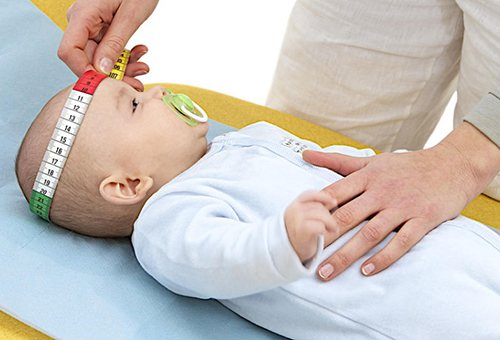
We measure the size of the baby's body
Every month, at a scheduled examination by a doctor, along with weighing, babies undergo a procedure for measuring body size. The main indicators of interest to specialists are height, head and chest circumference.
Immediately after birth, the baby's body will be disproportionate - the head stands out in particular, and its indicator is slightly higher than the circumference of the chest. By half a year, the circumference of the head and chest become approximately the same, and after 6 months the child's chest begins to expand, and the proportions of the body return to normal.
Head circumference is measured horizontally, covering the back of the head, ears and forehead. You can test it yourself using a soft measuring tape.
Head circumference size chart:
- at birth - 34-35 cm;
- from birth to 3 months - 34-40 cm;
- from 3 to 6 months - 40-44 cm;
- from 6 to 9 months - 44-46 cm;
- from 9 to 12 months - 46-48 cm;
- from 12 to 18 months - 48-50 cm.
This indicator allows you to choose the right hats and caps for a newborn, therefore, before buying new things, it is recommended to measure your head, it will not take much time, but it will save you from the difficulties with choosing children's hats.
The circumference of the chest also increases as the child grows, if in the initial months the increase is 1.5-2 cm per month, then after six months the indicator will steadily change by only 0.5-1 cm.
Chest circumference table for babies:
- at birth - 30-32 cm;
- from birth to 3 months - 30-38;
- from 3 to 6 months - 38-45 cm;
- from 6 to 9 months - 44-50 cm;
- from 9 to 12 months - 50-52 cm;
- from 12 to 18 months - 52-54 cm.
Knowing the circumference of the chest, you can easily find the right size for your child, which will simplify the choice of models and save you a lot of time.
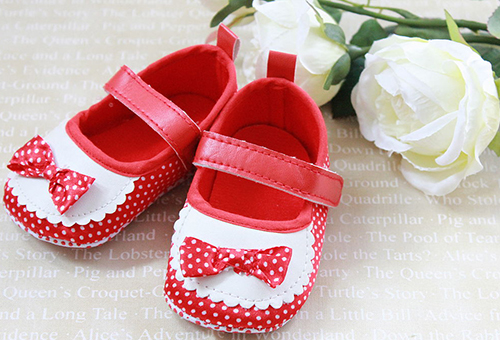
How to determine the size of clothes and shoes for babies?
To purchase new clothes for a small child, you should know exactly what size the baby is now wearing, since it is better for a baby to buy things with a small margin, because children grow very quickly.
As for clothing, the best option would be to be guided by the proposed branded dimensional grid, but this only applies to domestically produced goods. Models from China and other foreign ones are best measured on their own. All you need to know is your baby's height (to determine the required length of the trousers) and chest circumference (to choose a blouse that is not too wide).
But it is better to measure the shoes by the length of the child's foot, since different manufacturers use different dimensional grids in the manufacture of children's slippers and booties. Leg length is measured from heel to toe. Another option is to trace the leg with a pencil on cardboard, and cut out a layout that you can use to measure the models you like.
An approximate table of the sizes of the legs of babies:
- from birth to 3 months - 7-9 cm;
- from 3 to 6 months - 9-11 cm;
- from 6 to 9 months - 11-14 cm;
- from 9 to 12 months - 14-15 cm;
- from 12 to 18 months - 15-18 cm.
Even an approximate table of sizes will help you choose the right things for a small child, since by eye you can accurately determine what size the crumbs have in this moment, is not always possible.
New moms often worry about how well their baby is doing. The reason for this concern very often arises after the very first visit to the clinic, where an inexperienced mother is told that her baby weighs too little or too much, gains weight poorly or does not grow at all. What are the norms for the weight and height of boys and will be discussed in this article.
Normal weight for a newborn boy
Let's say right away that normal weight a newborn, even a boy, even a girl - the concept is very relative. Too many factors affect the weight of the baby will be born. Here, heredity plays a role, and the nutrition of the mother, and at what gestational age the child was born. At birth average weight boys ranges from 2500 to 4500 g, and height - 45-56 cm. Also in the maternity hospital, the Quetelet index is calculated - the ratio of weight and height of newborn boys and girls, which normally ranges from 60 to 70 units. During the first days after birth, the child loses up to 6% of its weight. Weight loss is associated with changes in the baby's metabolism, an increase in motor activity. After a few days, weight loss stops, and the baby begins to grow actively.
1. First month:
- weight gain - 500-600 g;
- growth - 2-3 cm;
- change in the size of the head circumference by 1.5 cm.
2. Second month:
- weight gain - 700-800 gr.;
- growth - 2-3 cm;
3. Third month:
- weight gain - 800 g;
- growth - 2-2.5 cm;
- change in the size of the head circumference by 1-1.5 cm.
4. Fourth month:
- weight gain - 700-750 g;
- growth - 2-2.5 cm;
- head circumference changes slightly or does not change at all.
5. Fifth month:
- weight gain - 650-700 g;
- growth - 1.5-2 cm.
6. Sixth month:
- weight gain - 600-650 g;
- growth - 1.5-2 cm;
- the chest in circumference becomes larger than the circumference of the head.
7. Seventh month:
- weight gain - 550-600 g;
- growth - 1.5-2 cm.
8. Eighth month:
- weight gain - 500-550 g;
- growth - 1.5-2 cm.
9. Ninth month:
- weight gain - 400-500 g;
- growth - 2 cm.
10. Tenth month:
- weight gain - 400-450 g;
- growth - 2 cm.
11. Eleventh month:
- weight gain 350-400 g;
- growth 1.5-2 cm.
12. Twelfth month:
- weight gain compared to birth is 3 times;
- increase in height compared to birth by 20-25 cm.
These rates of weight gain and growth are also quite relative, because most often the child grows in leaps and bounds. In order to make sure that the baby is all right, the mother must answer a few questions for herself:
- How often does the baby breastfeed?
- Does the child defecate often? Is his urine clear and pale yellow in color?
- Are your baby's eyes bright and shiny?
- Does your baby's skin look healthy? Are baby's nails growing?
- Is the child active and moving vigorously?
- Does the child's psycho-physical development meet the standards?
- Most of the time the child good mood?
- Are the periods of rest for the child replaced by periods of activity?
Positive answers to all these questions indicate that the child is developing normally. A few negative answers should be a reason to consult a doctor.
Boys weight chart
Using centile tables of weight (Table 1) and height (Table 2) for boys, you can determine how the child corresponds to the age norm. If the child’s parameters fall into the “very low” or “very high” column, parents should take him to the doctor for a consultation, because this may indicate a pathology in his development, for example, malfunctions in the endocrine system.
The weight of a newly born baby is the main indicator of the state of his health in general. That is why doctors turn to this factor Special attention, fixing it one of the first in the medical book of the newborn. And it is no coincidence that the question of what weight is considered normal at the birth of a child is so much of interest to young mothers. In addition, women in labor should also know what this indicator depends on, what the underweight or excess weight may threaten, and how to avoid weight problems in the baby in the future. Many also ask the question: what kind of child at birth, depending on the gender of the baby? You will find answers to all these questions here.
Everything you need to know about newborn weight
The normal weight of a child at birth ranges from 2.5-4.5 kg. It should be borne in mind that newborn boys usually have a slightly larger body weight. So, normal at the birth of a girl can be a maximum of 4 kg. If less than 2.5 kilograms, then in this case the baby has its deficiency. From here, difficulties may arise with nursing the child, it may even require special nutrition and appropriate conditions for the normalization of weight. Such babies are not considered premature, but their stay in the hospital, however, may be somewhat delayed. Now young mothers most often give birth to children with normal and even excess weight. But babies who are underweight usually catch up with their peers in this regard by six months.
What determines the weight of the child after birth?
Many factors influence. The reasons why babies are born with too much body weight can be as follows:
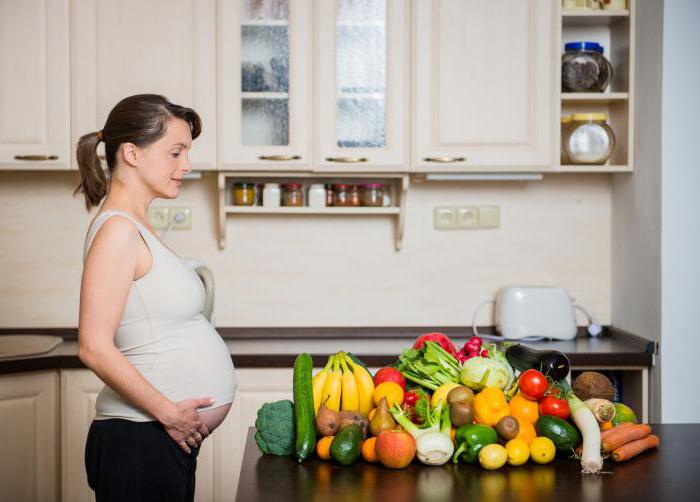
Underweight in babies: causes
- Carrying two, three or more fetuses at the same time.
- Diseases of the cardiovascular and urinary systems (including infectious ones), chronic lung diseases in a woman in labor.
- Diseases of the uterus, defects in the placenta, poor blood clotting in the mother.
- Poor nutrition of the expectant mother during pregnancy, unfavorable climate and ecology.
- Smoking and alcohol consumption in excess of the permissible limits (in most cases, alcoholic beverages should be completely excluded).
- Consumption of caffeine in large doses.
Nutrition and its effect on the weight of the newborn in the early days
The normal weight of a baby at birth in the first 24 hours of his life can decrease by about 150-200 grams. This indicator is appropriate if the baby appeared with a weight of 2.5-4.5 kg. This is the normal weight of a baby at birth. It is considered acceptable and absolutely natural to reduce it by a maximum of 300 grams. This is due to the fact that the edema gradually disappears in the newborn, and the intestines are freed from what has accumulated in it. After birth, the baby has not yet established a diet, and this also affects body weight. 
Normalization of the baby's weight occurs already on the fifth day. On the tenth day, body weight begins to increase regularly, depending on nutrition. New mothers who are breastfeeding should not panic if the baby is recovering too slowly. The point is that on artificial feeding babies gain weight many times faster than on the mother. This is due to the presence in purchased mixtures of various nutrients and components that allow the newborn to develop more quickly.
The normal weight of a child at birth is not uncommon in our time, but modern medical centers allow nursing newborns with a body weight of only one kilogram. Such babies are born with a weakened immune system, they are completely inactive and lethargic, so in the first days of life they need more attention and care. As statistics show, after a year, thanks to the help of doctors, babies become stronger, their weight returns to normal, and in terms of their development they do not lag behind their peers at all.
Excess and underweight: danger
Insufficient body weight of the fetus, however, as well as its excess, can be observed even in the womb. If underweight is diagnosed on later dates pregnancy, in this case, the young mother is prescribed a special diet rich in essential vitamins and minerals. Calorie intake is also determined by the attending physician. 
If the fetus has overweight, this is also not a good indicator and is considered a deviation. Doctors are wary of this, since the extra weight of the baby may indicate violations in its development, and in most cases give the woman in labor some recommendations. Most often, she is prescribed a balanced diet, which is dominated by low-fat dairy products, vegetables and fruits. Fatty delicacies, sweet pastries and other flour products should be completely excluded from the menu; smoked meats and too high-calorie dishes are also taboo.
In addition to malnutrition, often overweight in a baby already at birth may indicate that the mother has diseases of the endocrine system.
What is the danger of overweight baby for the health of the expectant mother
An important point: overweight baby can harm not only the newborn, but also his mother. Before birth, this can threaten the occurrence of complications in a woman already in the process of childbirth. The most common of these is a perineal tear. To avoid such injuries, women in labor are prescribed a caesarean section. After birth, such a baby may need increased attention. 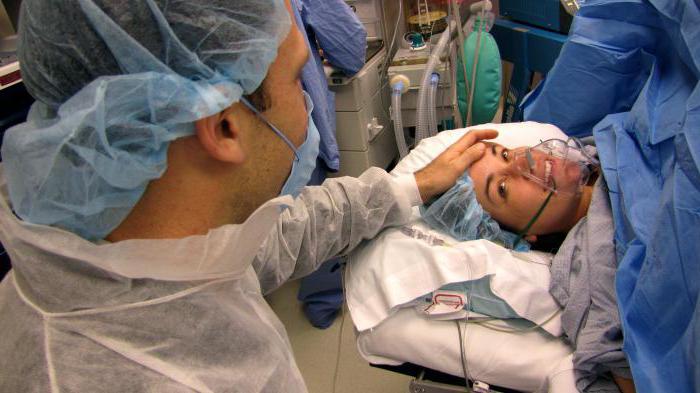 During the first year, parents should constantly monitor the development of their child. By the way, normal at birth partially guarantee that his state of health at that time will be positive. In addition, with excess or deficient body weight, babies can develop completely different complications.
During the first year, parents should constantly monitor the development of their child. By the way, normal at birth partially guarantee that his state of health at that time will be positive. In addition, with excess or deficient body weight, babies can develop completely different complications.
What is dangerous underweight newborn
Imagine that the child has already been born, and consider the problem of weight normalization in the process of the baby's life. In children born with low birth weight, there is a violation of thermoregulation. As a result, babies freeze faster, and it takes them much longer to warm up and restore the temperature balance. Such children are more susceptible to various diseases and colds, since in most cases they have reduced immunity. Hypovitaminosis and anemia are another frequent companions of underweight children.
What can overweight newborns lead to?
It has always been believed that the more weight born child the healthier it will be. Especially often they say this about boys - they say, a real hero will grow up! This assumption is fundamentally wrong, because the normal weight of a child at the birth of a boy should be up to 5 kg. 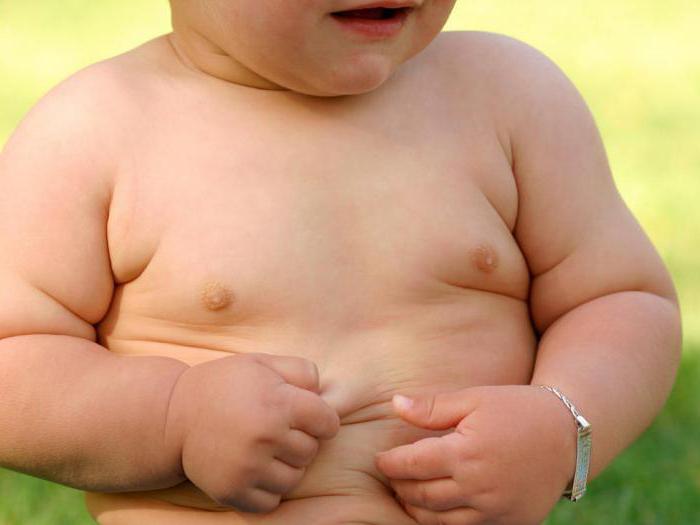 Perhaps, in the first years of life, a baby born with a larger mass will be less likely to get sick than his peers. However, in the future, he may have serious problems. These include allergies, lag in physical development(since the child will experience difficulties in controlling his body), as well as misunderstanding on the part of friends (which can later lead to the development of mental disorders).
Perhaps, in the first years of life, a baby born with a larger mass will be less likely to get sick than his peers. However, in the future, he may have serious problems. These include allergies, lag in physical development(since the child will experience difficulties in controlling his body), as well as misunderstanding on the part of friends (which can later lead to the development of mental disorders).
Regular weight control is the key to proper development
The normal weight of a child at birth is, of course, excellent, but in the future, parents can, without noticing it, fatten the baby (or vice versa). It is not only possible to avoid problems in this regard, but it is even necessary to initial stage child's growth. First of all, it is necessary to carefully develop a diet, discussing and clarifying all the nuances with a specialist. In the future, you need to constantly monitor the growth and weight of the baby. 
However, there is one “but” here: if the state is stable even in the presence of excess weight(within acceptable limits), then parents should not worry about it. The main thing is that the child feels good and is comfortable at this weight. IN this case young parents can simply consider their child moderately well-fed and not take any action on the way to weight loss.
A newly born baby experiences real stress from loud noises, bright lights and cold. He screams as he takes his first breaths, instinctively looking for his mother to be under her protection. However, first it will be assessed on the Apgar scale, measured, and only then will it be handed over to the mother.
The first parameters of a newborn
A newborn girl weighs from 2 to 4.8 kilograms, has a body length of 43.6 to 54.7 centimeters, head circumference 30.3 - 37.4 centimeters, chest circumference 31 - 37 centimeters.
A newborn boy weighs from 2.1 to 5 kilograms, has a body length of 44.2 to 55.6 centimeters, head circumference 30.7 - 38.3 centimeters, chest circumference 31.7 -37.8 centimeters.
Your newborn baby
- Weighs 2 to 5 kilograms
- Has a height of 43.6 to 55.6 centimeters
- Has a head circumference of 30.3 to 38.3 centimeters
- Has a set of innate reflexes
- Can swim
- Can crawl a short distance to the mother's breast
- Recognizes mother by smell
Apgar scale allows you to quickly assess the condition of the baby. A newborn baby is evaluated for several signs in the first minute after birth and after 5 minutes. Skin color, reflexes, muscle tone, heartbeat and breathing are assessed. Each attribute is given from 0 to 2 points. In the first minute, normally, the baby scores 7 - 8 points, and in the fifth - 8 - 10 points.
Long-awaited meeting
After some manipulations, the newborn baby is placed on the mother's chest or stomach. He, so small, has a whole set of unconditioned reflexes that allow him to survive. So, even without outside help, a newborn can crawl from the mother's chest to the breast and find the nipple to eat. But usually mothers themselves try to breastfeed their baby. The first bodily contact, like the first feeding, is very important for the baby. A drop of colostrum that falls into the small greedy mouth at this time will set the baby's digestive tract to correct work, strengthen his immunity and protect against allergic diseases. It is early attachment to the breast that will ensure good lactation for the mother, which means that the child will receive the most correct and suitable nutrition for a long time.
Unconditioned reflexes of the newborn
A newly born baby knows how to swim, does not freeze in the cold (of course, with a short stay), can grab hold of his mother's fingers with his hands and hold on tightly, so that he can be lifted. If you take the child under the armpits, “put” it so that it touches a hard surface with its feet, and tilt it forward, it will “walk”.
After birth, the baby is examined by a pediatrician and, if necessary, by other specialists. If there are no contraindications, with the consent of the mother, the newborn child receives the first vaccination - against the hepatitis B virus.
Here he is - a newborn child - small, but strong and skillful!
